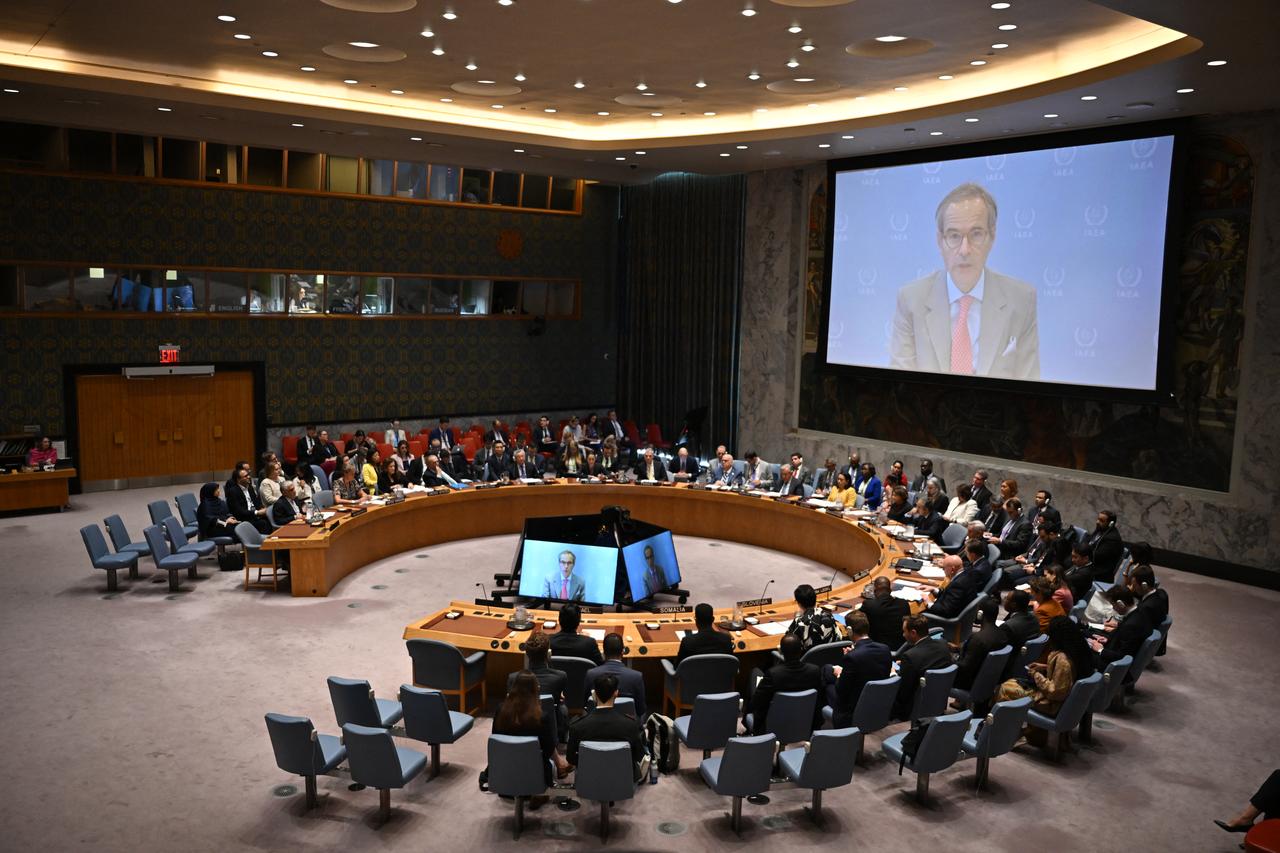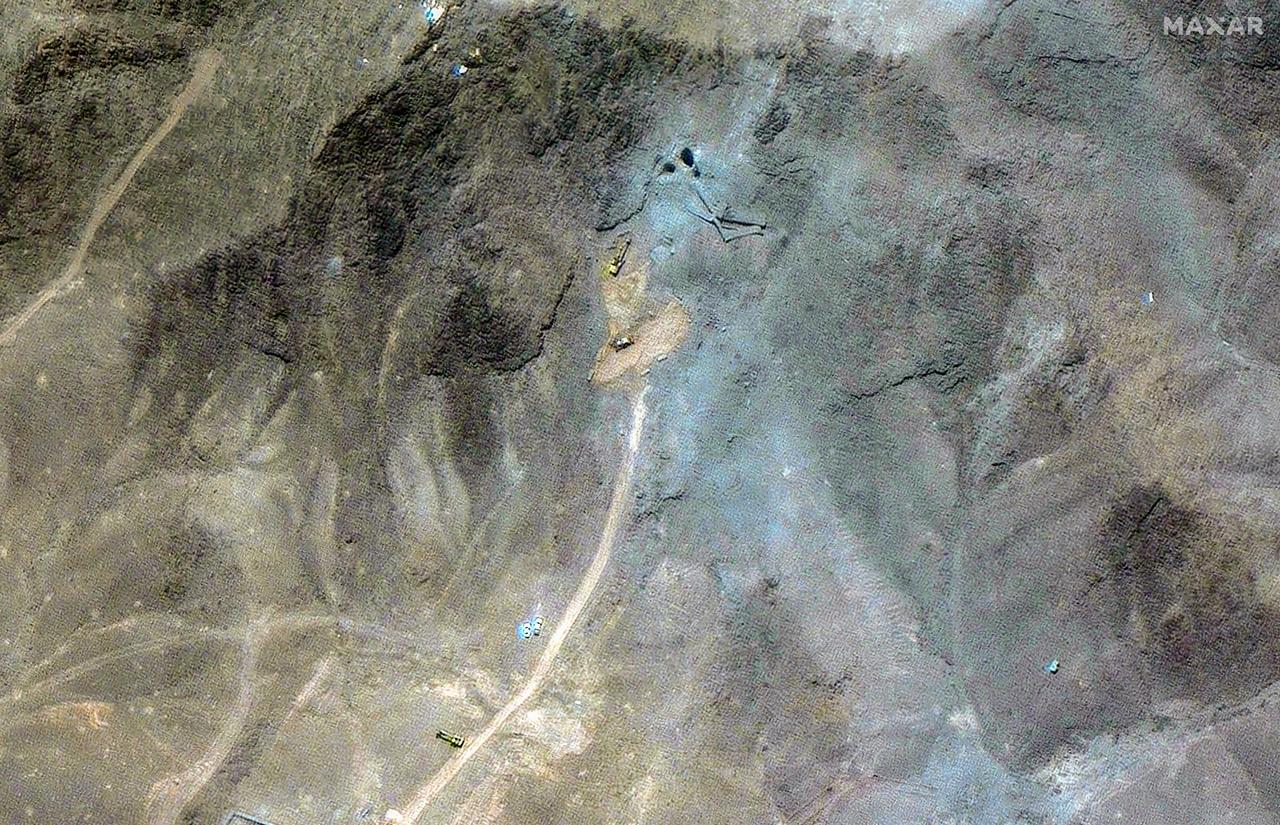
Iran could resume producing enriched uranium within months, despite significant damage to its nuclear infrastructure caused by recent US and Israeli strikes, International Atomic Energy Agency (IAEA) Director General Rafael Mariano Grossi said in an interview with CBS News.
"They can have, in a matter of months, a few cascades of centrifuges spinning and producing enriched uranium, or less than that," Grossi stated, underscoring Iran's preserved industrial and technological capabilities.
Grossi said that while some nuclear facilities—including Fordow, Natanz, and Isfahan—had been heavily damaged, others remain operational. "There has been severe damage, but it's not total damage," he said.

Israel launched a bombing campaign on Iranian nuclear and military sites on June 13, saying it was aimed at keeping Iran from developing a nuclear weapon—an ambition that Tehran has consistently denied.
The US subsequently bombed three key facilities used for Tehran's atomic program on June 22, dropping six bunker-buster bombs on the Fordow nuclear facility and launching dozens of cruise missile attacks on sites in Natanz and Isfahan.
Iran's Foreign Minister Abbas Araghchi acknowledged that the extent of damage to the nuclear sites is "serious" and "excessive," but details remain unknown as US President Donald Trump insisted Iran's nuclear program had been set back "decades."
However, Grossi said, "Some is still standing," and emphasized Iran's retained capabilities. "They can have, you know, in a matter of months, I would say, a few cascades of centrifuges spinning and producing enriched uranium, or less than that," Grossi said.

A key concern remains the status of Iran’s estimated 408.6 kilograms (approximately 900 pounds) of uranium enriched to 60%, a level beyond civilian needs but still below weapons-grade. The IAEA cannot confirm whether the stockpile was moved before the attacks.
"We don’t know where this material could be," Grossi said, adding, "Some could have been destroyed as part of the attack, but some could have been moved. So there has to be, at some point, a clarification."
Grossi noted the IAEA had planned to inspect a new enrichment facility in Isfahan on June 13, the same day the site was hit by U.S. bunker-buster bombs.
In a separate interview with Fox News's Sunday Morning Futures program, Trump said he did not think the stockpile had been moved. "It's a very hard thing to do, plus we didn't give much notice," the U.S. president said. "They didn't move anything."

Iranian lawmakers voted to suspend cooperation with the IAEA, and Tehran rejected Grossi's request for a visit to the damaged sites, especially Fordow, the main uranium enrichment facility.
Iran's parliament passed legislation to suspend cooperation with the IAEA by an overwhelming majority of 221 to 0 votes in the 290-member assembly.
The Guardian Council, Iran's constitutional watchdog, approved the parliamentary legislation on June 26. According to the law, no IAEA inspector will be allowed to enter the country, and submission of any reports on nuclear activities to the agency is completely prohibited.
"We will not allow the International Atomic Energy Agency to install cameras at our nuclear sites, and the agency's chief will be banned from entering the country," Araghchi said in a statement reported by the Iranian national news agency IRNA.

US Secretary of State Marco Rubio condemned on Saturday the demands in Iran for the arrest and execution of IAEA Director General Rafael Grossi as "unacceptable."
"We support the IAEA's critical verification and monitoring efforts in Iran and commend the Director General and the IAEA for their dedication and professionalism," Rubio wrote on X. He said the US urges Iran to provide the safety and security of IAEA personnel.
Iranian officials continue to accuse Grossi of legitimizing Israeli and US attacks and supporting Tel Aviv's actions against Iran's national security. Ali Larijani, advisor to Iran's leader Ayatollah Ali Khamenei and former parliament speaker, stated, X: "When the war is over, we will settle accounts with Grossi."
In his CBS interview, Grossi urged a return to dialogue. "This will come to a point where there is some agreement... and of course, who is going to verify that? The IAEA," he said.
He confirmed that IAEA inspections had been ongoing until shortly before the strikes, though access was limited in several areas. Grossi reiterated the agency had not found evidence of an active nuclear weapons program but raised concerns about unresolved questions surrounding undeclared uranium traces.
Grossi emphasized the importance of resuming inspection work to clarify Iran's nuclear status. "We need to be in a position to ascertain and to confirm what is there, and where it is, and what happened," Grossi said.
The IAEA chief noted that Iran had found unexplained traces of uranium at undeclared sites, but they provided no credible answers about their origin or location.
"Iran had a very vast, ambitious program, and part of it may still be there, and if not, there is also the self-evident truth that the knowledge is there. The industrial capacity is there. Iran is a very sophisticated country in terms of nuclear technology," Grossi stated.

A 12-day conflict between Israel and Iran erupted on June 13 when Israel launched airstrikes on Iranian military, nuclear, and civilian sites, killing at least 606 people and injuring 5,332, according to Iran's Health Ministry.
Tehran launched retaliatory missile and drone strikes on Israel, killing at least 29 people and wounding more than 3,400.
The conflict came to a halt under a US-sponsored ceasefire that took effect on June 24. Grossi expressed hope for a diplomatic resolution, stating that military operations alone cannot provide a definitive solution and that an agreement with a verification system is necessary.